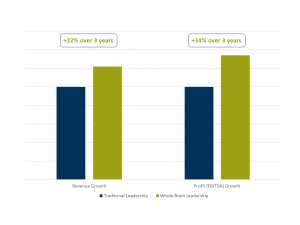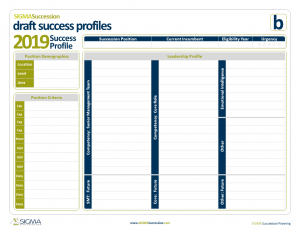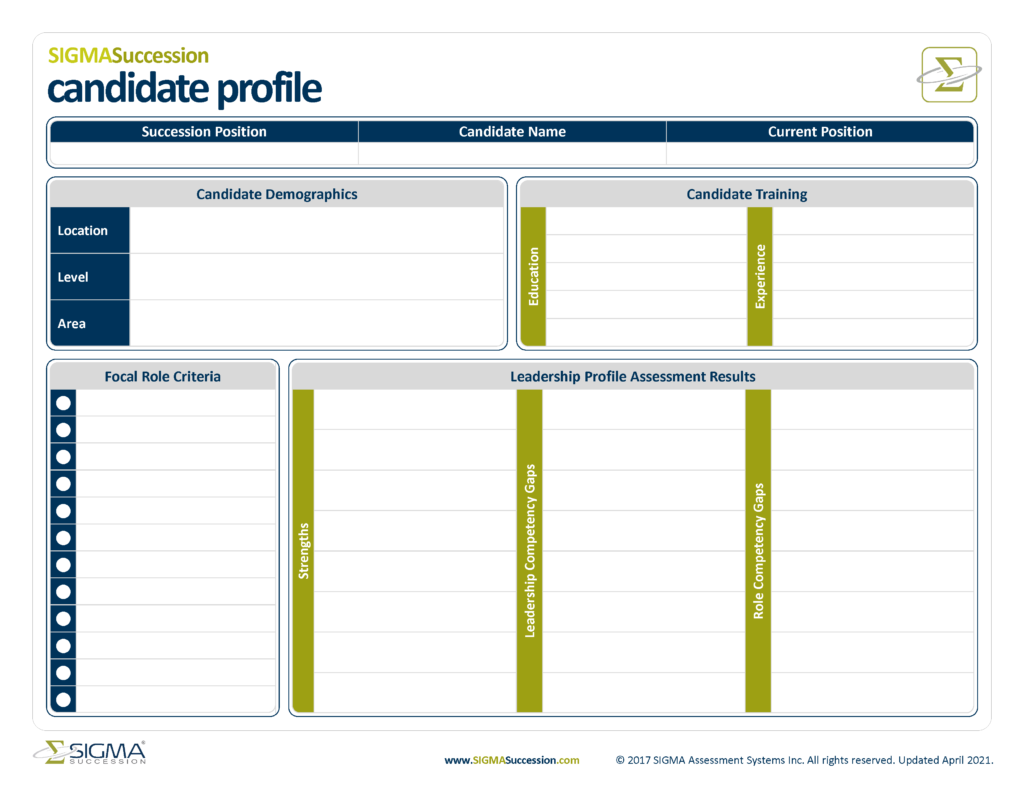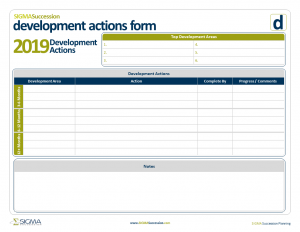Balanced Leadership in Succession Planning
Balance Your Leadership Skills with Succession Planning
Regardless of industry, company mission and goals, or organization size, good leadership is a must for business success. However, what constitutes “good leadership” is open for interpretation. One thing is for certain – as the world of work changes, so should our leadership styles. As consulting firm Accenture puts it, whole-brain leadership is the future of executive engagement, and is rapidly becoming a requirement for success.[1] This style of balanced leadership combines technical, logical leadership skills with creative, adaptive abilities. According to their research, while many leaders want to be using a whole-brain approach, only 8% are currently doing so.[1]
At SIGMA, we focus on balanced leadership, which creates well-rounded executives who are ready to face the future of their business and continue to excel. We also believe in succession planning as an on-going, evolving strategic function that can help your company anticipate and prepare for the future of leadership well in advance, giving your organization an edge over those who are slow to change.
Traditional Leadership Style
Traditional leadership skills are those hard skills that help executives build their business: having a good understanding of relevant best practices, being able to make quick decisions and take sound risks, and formulating a clear and compelling vision employees will understand. The goal of these skills is to create a thriving business with a clear future. However, what often gets overlooked are the soft skills needed to lead, motivate, and communicate with individuals, ensuring goals are met and the vision is enacted.
Additionally, traditional leadership skills often don’t leave much room for flexibility, and as technology and the way we communicate with others rapidly changes and becomes integrated in our working and personal lives, a more rigid approach to leadership may be harmful to today’s leader.
The Evolution of Leadership in The Changing World of Work
Becoming an effective leader is a difficult process in the first place. Many struggle to adjust their skills as they move from middle-management into executive positions. The analytical skills, ability to focus, and independence that often help an employee rise through the ranks can have declining returns in a leadership role. Consequently, leaders must rely more on their communication skills, flexibility, and understanding of how to motivate others to meet the organization’s goals.
The picture is further complicated when you consider the way work has changed in the last decade or so. Technology has become more prevalent within companies, ushering in greater automation and requiring employee training in new software and packages. What’s more, technology has impacted how customers, clients, and other external stakeholders interact with businesses. It is easy to find an organizations’ goals, values, and past track record in seconds. Customers can leave reviews and often expect rapid responses from companies online. The way employees and clients interact with business is evolving, and leadership needs to evolve with it.

In fact, most companies recognize the trends toward more balanced leadership. More than half of organizations are beginning to re-skill their executives, and many are bringing in new, external talent to meet their leadership needs.[1]
How to Create a Balanced Leadership Team
Although change in business is inevitable, it does not need to be overwhelming. Development of your company’s current and future leaders is easily managed with a robust and transparent succession plan. Here, we outline how you can use succession planning to create balanced leadership within your company.
1. Identify Requirements for Balanced Leadership
Before looking to change your leaders’ skills, you must first understand the role they need to fulfil. What are the competencies required to be successful? Are there different skills needed to be an effective leader in general vs. being successful in a particular role? Ask incumbents, peers, and other leaders alike for feedback on the traits needed to succeed as a leader. Remember to look for a balance of traits, considering the hard- and soft-skills required.
Consider using our Success Profile to help you identify those competencies needed for success as a leader in your company and within each given role in your executive team.

2. Look to the Future of Your Company
Many assessments and talent development plans focus on the here and now. With a strong succession process, you can look to the future to better understand the upcoming needs of your leadership team, and to meet these expectations as they arise. Always consider future trends for your business and your leadership team when looking for development opportunities. Build these components into the Success Profile for each role.
3. Understand Your Leadership Development Opportunities
Now that you understand the traits needed for a given role, it’s time to take stock of your current employees’ abilities. A good succession plan will use objective, empirically validated assessments to gain a snapshot of your leaders’ skills. It will also identify areas where there is room for growth. Consider using 360 degree assessments to gain a balanced perspective of your leaders’ competencies. Track how each candidate’s abilities and development opportunities map onto the skills required for success in their role. Also, use this as an opportunities to review how their skills may make them suited for other roles in the future.

4. Formalize Plans for Balanced Leadership Growth
Finally, you can apply the knowledge of your roles and of your leaders to determine their development plans. Consider setting goals for leadership development based on employee interest, company need, and impact on performance. Carefully consider action steps that will help leaders gain experience in new areas and practice their skills in relatively safe environments. Plan regular check-ins to ensure accountability, and reward successes as they occur. Use worksheets to make sure goals are clearly outlined and easily accessible.

Developing leadership skills, especially in unfamiliar domains, is a difficult pursuit. With succession planning, you can formalize the developmental process and ensure leaders are supported in their growth efforts. Furthermore, with a robust succession plan, you can tie these development efforts into opportunities for internal promotion and more responsibility in the organization. Developing skills and honing a balanced leadership style can be a win-win situation for leaders and organizations alike.
How SIGMA Can Help Develop Leadership for Succession Planning
At SIGMA, we want to help your current and future leadership team develop their competencies and expand the scope of their leadership abilities. We build one-on-one coaching, individualized development plans, and regular accountability checks into every succession plan we create. Our Launch Series will deliver your company a personalized succession plan aimed to develop your future leaders in just 30 DAYS. For more information on our Succession Process, Launch Series, or Succession Planning solutions, contact us and learn more about how we can help your organization develop for the future.
[1] Lacy, P., LaVelle, K., & Zamora, A. (2019). Accenture Strategy Whole-Brain Leadership: New Rules of Engagement 2019. Accenture, June 5, 2019.